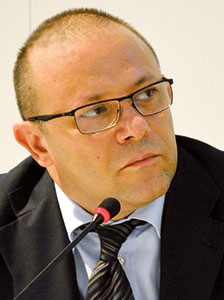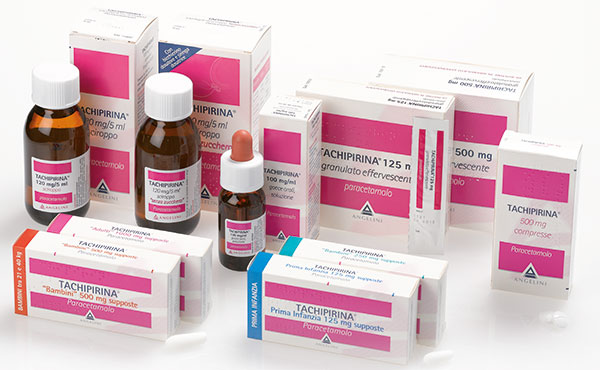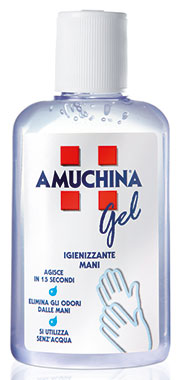Objective: build consensus through innovation
 «Every journey begins with the exciting challenge of imagining what lies ahead».
«Every journey begins with the exciting challenge of imagining what lies ahead».
How is the relationship between brand and consumer changing? What factors are influencing the evolution of the paradigm in this sense? And what actions need to be taken in order to face a future that is looking to be radically different in terms of the development, production, distribution and communication a pharmaceutical product?
Comments by Roberto Masciambruni - Head of Packaging Design at Angelini (Ancona) - opens a window to the world of pharmaceuticals, a world crossed through by currents of innovation not only, and not mainly, in technology. Moreover, this is a world that appears to be on the brink of making deep changes to its strategic vision in light of new responsibilities for institutions and enterprises.
(By Luciana Guidotti)
What are the factors capable of conditioning the future drug market?
In order to forecast the trends that will take hold in future, we can rely on certain interesting indicators supplied by the period now coming to a close.
There have been two fundamental drivers during the last twenty years that have determined an epochal change to the relationship between brand and consumer, requiring a totally new approach to our way of doing business and of developing products.
The first driver has to do with social media, the second with sustainability. In both cases, however, there is still much to learn of their implications and how to best make value of their potentials.
The fact is that, in the near future, concerns will dedicate more and more time to the protection and adaptation of their brands to this new scenario by listening, building consensus and cultivating new trust-based relationships with brand ambassadors, which is to say anyone capable of bestowing value on the brand.
We will thus see the use of new “power-ups” to amplify the brand message and counter attacks from competitors.
Let us prepare for witnessing the birth of new and often unpredictable partnerships between brands and other enterprises: co-marketing (between different kinds of concerns), shared research, etc....

 Are new media also affecting how packaging is used as a communication tool?
Are new media also affecting how packaging is used as a communication tool?
As far as regards new technologies applied to the product, one thing needs first be said. The rise of independent and niche brands is always connected with the fact that social media play an active role within the enterprise.
These independent brands will utilize social media and new technologies to their own advantage in order to reach a substantial number of consumers through targeted messages capable of communicating authenticity and novelty.
In order to maintain their leadership role and protect their business, the large brands will thus require robust social media strategies.
With this in mind, Angelini has sought to commit itself with a project specifically aimed at making better use of the competitive advantage of “getting there first”. The project is called Interactive Packaging, and it integrates new media and consumer service initiatives through product packaging. This because of one thing we can be certain: today’s consumers are so spoiled by novelty that they crave it even more... So brands are expected to move freely and coherently in this new space.

Will we also have a “new” packaging in terms of functionality?
To take up what I was saying just now, the work of Angelini’s Packaging Design will focus on communicating the effective benefit of having a “green” design system geared toward reducing the use of raw materials at the source.
Angelini is in line with and on the cutting edge of this theme with the Design to Green project, which has been credited as one of the best “green vision”-oriented design processes.
The characteristics of Design to Green are a reduction to the amount of raw materials used on already defined projects, the creation of a system of reduction at the source in order to design eco-compatible packaging, a reduction of the volume of packaging in order to avoid transporting air and optimize loads on means of transport.
 Is “green” just another way of saying “sustainability”?
Is “green” just another way of saying “sustainability”?
The idea of sustainability, once confined to the themes of ethics, environmentalism and “corporate social responsibility”, is now more than ever the order of the day, since this term has evolved into an important catalyst for change, innovation and, without question, growth. Sustainability is now an integral part of the decision-making process, both in business practices and in managing social dynamics. Nonetheless, for many concerns it remains a challenge to completely integrate sustainability into the heart of their activities or brand, and to carry it beyond well-articulated mission statements and company values.
During the last ten years, companies were able to limit themselves to constructing a vision of sustainability, even without going into detail or without any real intention to get involved in the social changes underway.
In any case, since consumers and other stakeholders have begun to apply pressure for real transparent and responsible business action, some organizations have begun to take interest in the problem.
Without a doubt, this represents a positive change telling of trends for growth: the future of the business will depend increasingly on the relationship between enterprise, brand and sustainability.

And so what do the new consumers expect?
Already since 2010, the largest corporations announced ambitious sustainability programs that aim to multiply the actions and concerns intent on containing environmental impact.
What’s certain is that, aware that business cannot go on as before, the major industrial players are opening the way toward new territories and future innovations.
This is encouraging and fertile ground for those who hold the reins of innovation, including in the field of packaging.
The crucial effect could be that the payoffs of an integrated strategy may not be immediately apparent and require significant initial investments, but certain evidence shows how a growing number of consumers, at the moment of purchase, also take into consideration the “values” of a concern.
So a change in strategy is in order. It will almost be necessary to turn back to the times of the “pioneer” entrepreneurs, those who decided to invest in exciting projects without worrying too much about a pristine balance sheet.
In fact, for this type of investments, it is necessary to consider trends, visions, philosophies. The reality is that we have to deal with a consumer that is increasingly informed, aware and willing to actively participate. And, in the long run, the benefits will exceed the initial investment.
Sustainability is here to stay, innovation means its value can be attained by way of the product, and this represents the market of tomorrow.
In brief, the Angelini Group
Angelini, a privately owned, international group, is leader in the healthcare and wellbeing market in the pharmaceutical and mass-market sectors.
Angelini was founded in Italy at the beginning of the 20th century. Today, it is an international group with branches in 20 countries and worldwide product distribution.
In the Pharmaceutical sector, Angelini focuses mainly on pain relief, inflammation, CNS, cold & flu, oral care & sore throat, gynaecology, disinfection.
Angelini is one of the top pharmaceutical companies in Italy by sales volume, with the highest growing rate for prescription market and a leading company in the self-medication sector.
Guided by the President Francesco Angelini, the group employs about 4.000 people. In 2013 the consolidated turnover was about 1.400 million Euros.

















